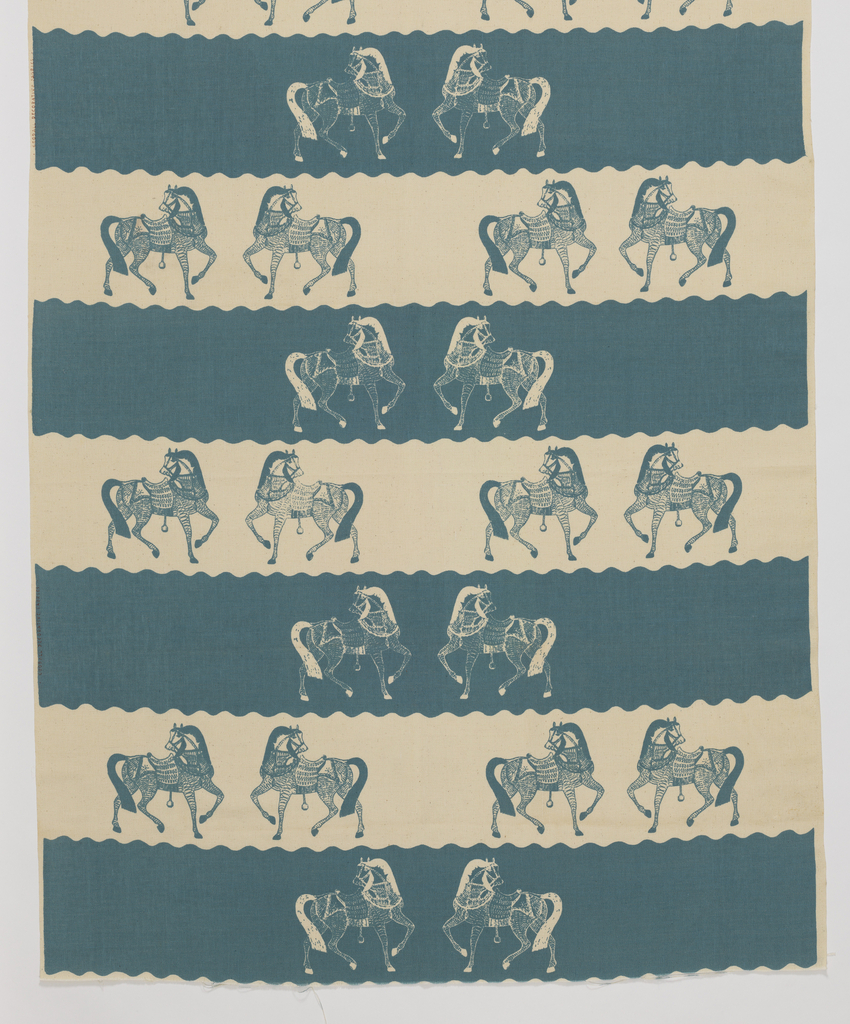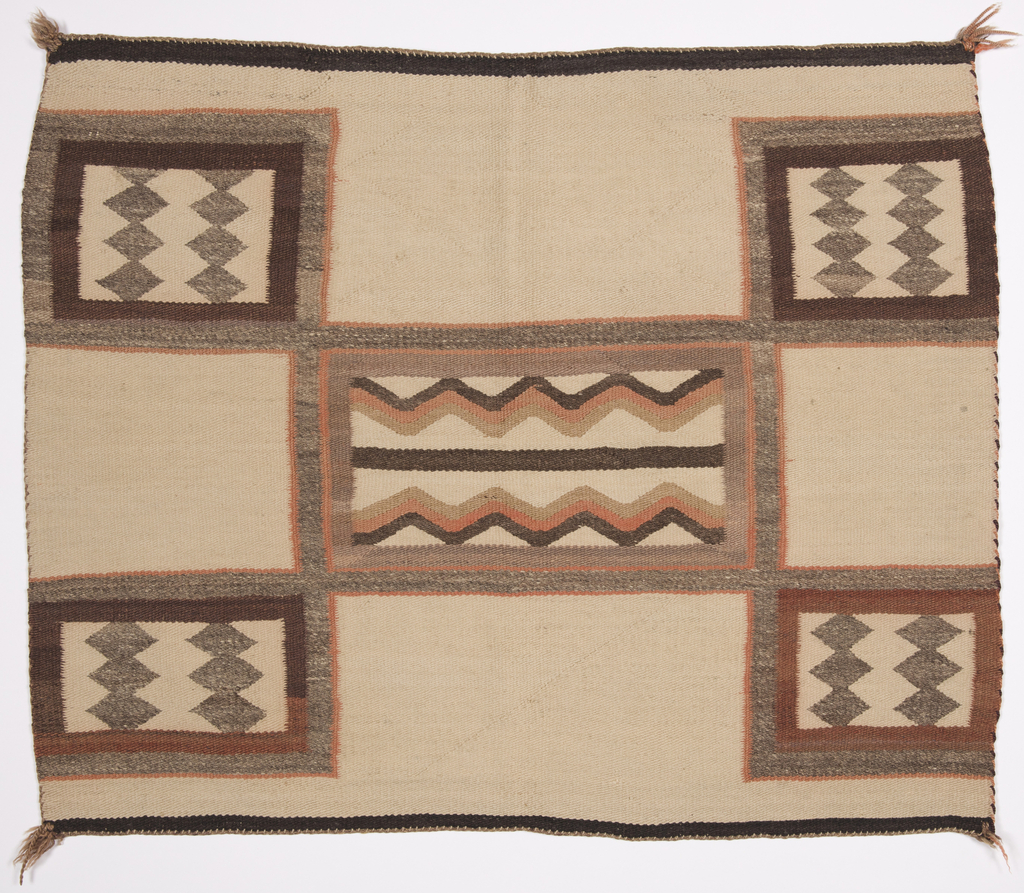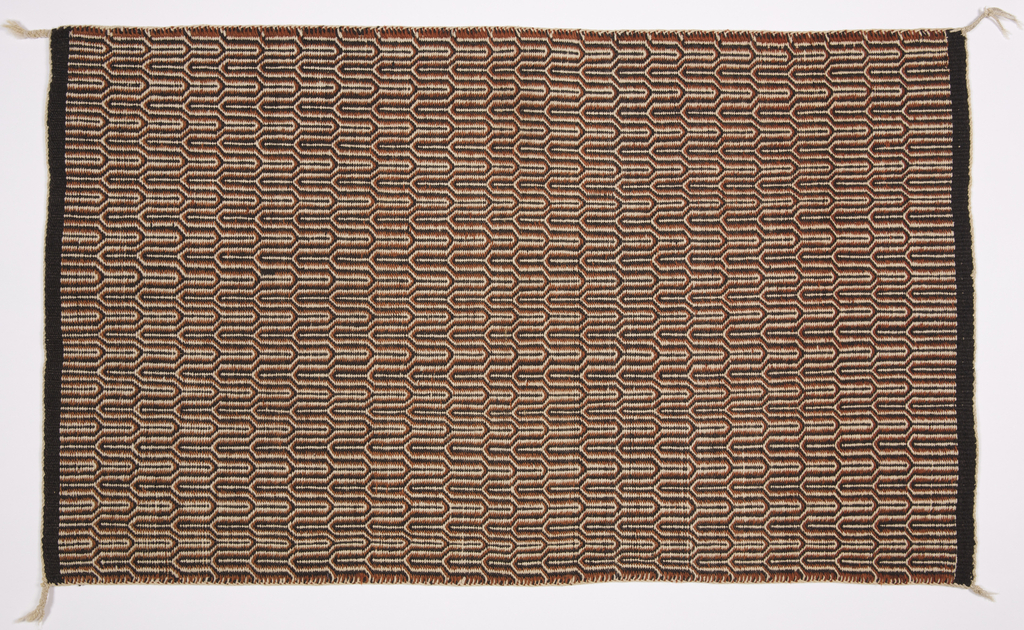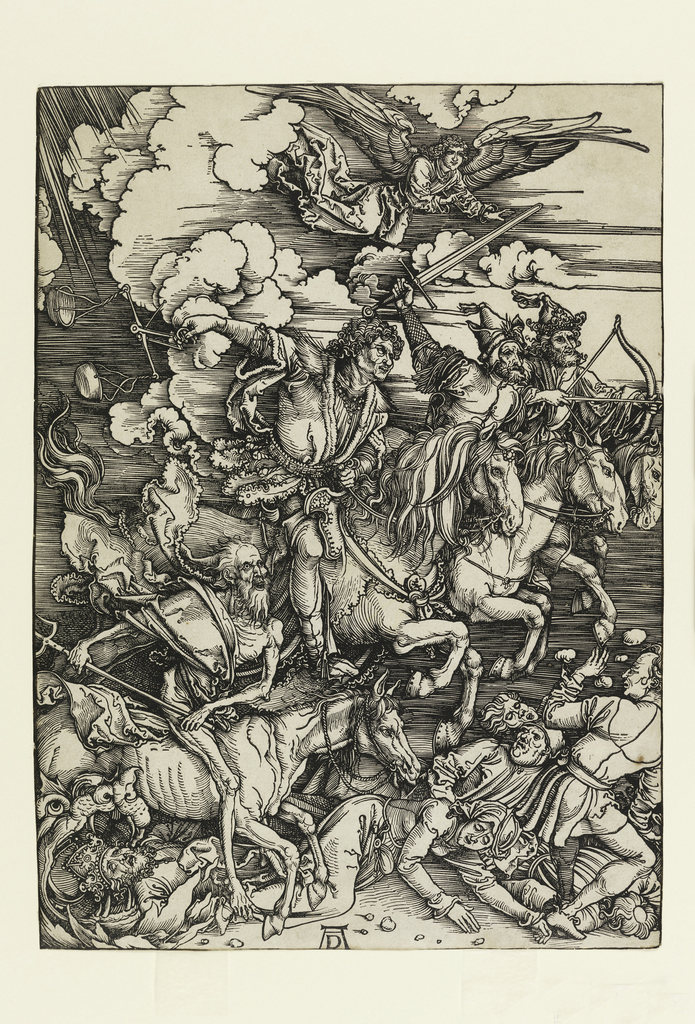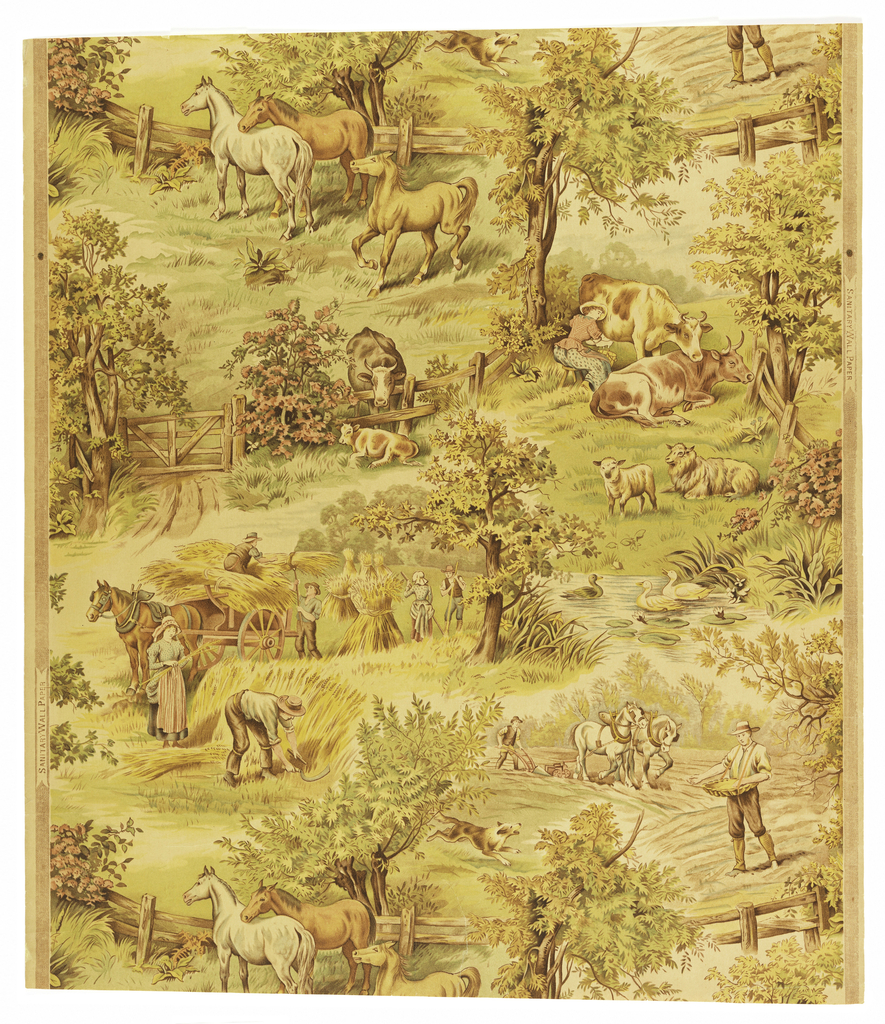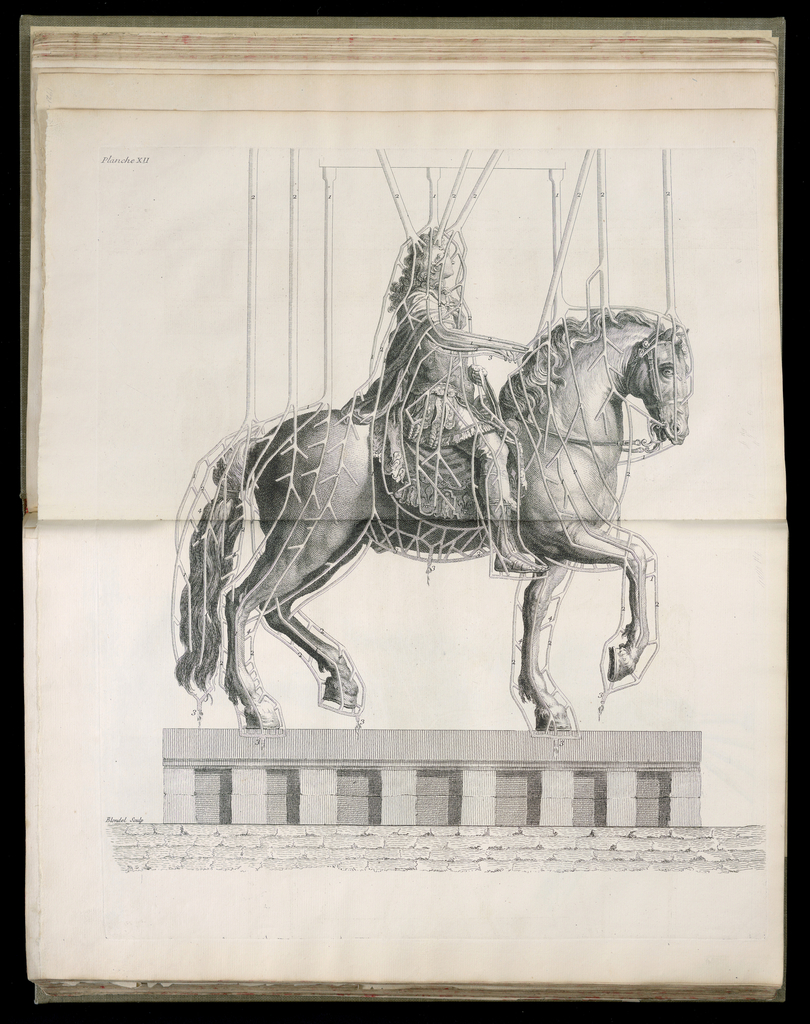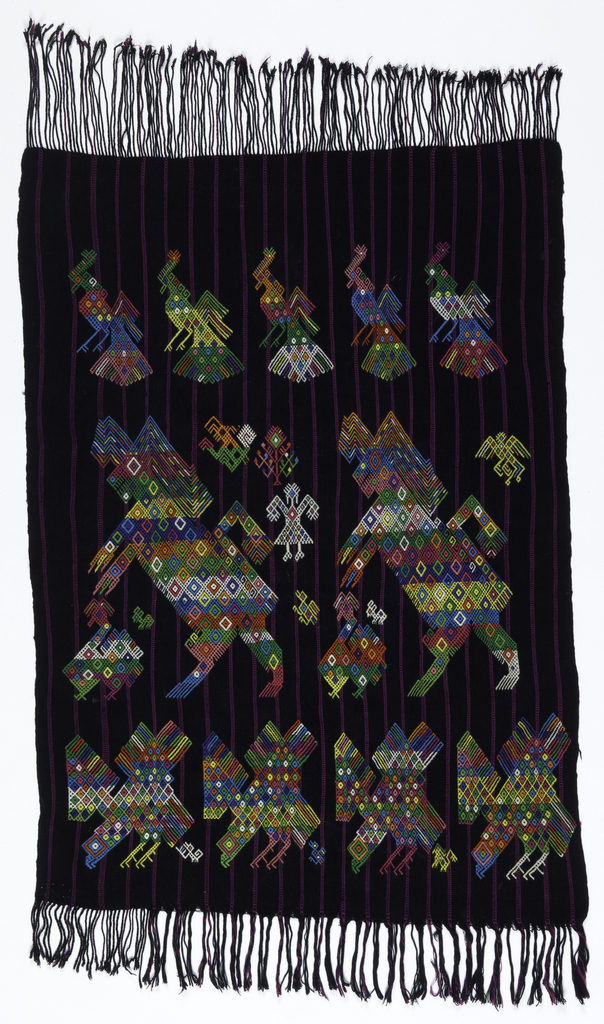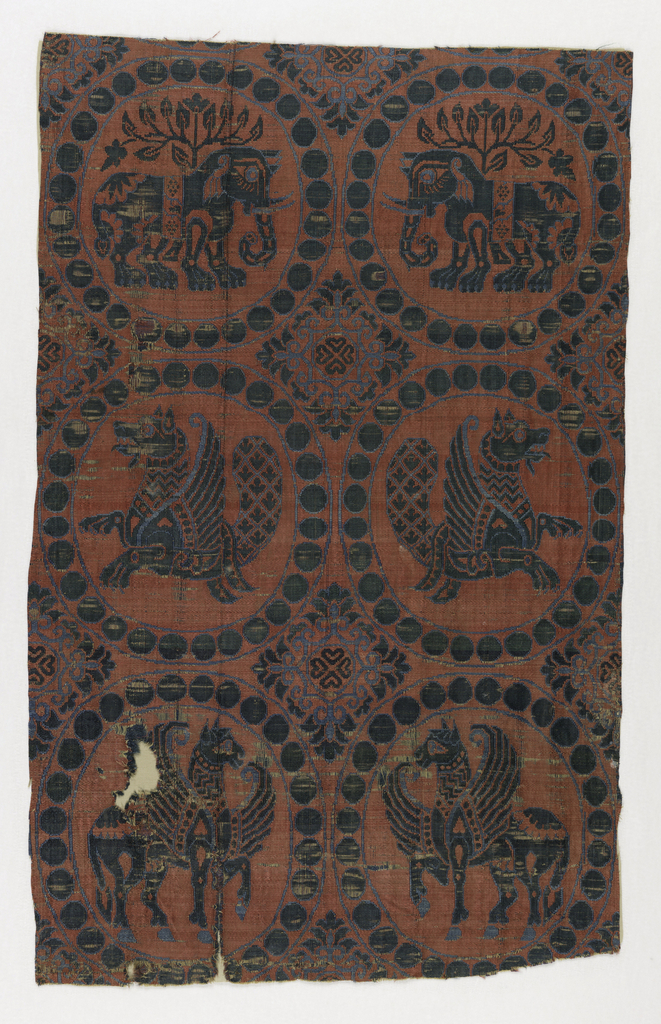Marguerita Mergentime is noted for her innovative use of text as a decorative element, and among her many sources of inspiration were books of calligraphy and penmanship. The “Spencerian” of the title refers to Spencerian script, a cursive writing style developed by Platt Rogers Spencer and promoted through his 1866 book, Spencerian Key to Practical...
This single saddle blanket features five rectangles, each filled with the zigzag and diamond patterns the Navajo adapted so successfully from the Mexican serape. While in the 1870s and 80s these motifs were paired with exuberant use of color, by the 1880s some traders, such as J.L. Hubbell and C.N. Cotton, began to push for...
Saddle blankets — placed under the saddle to protect the horse from chafing and pressure from the saddle — continued to be used by the Navajo long after handwoven garments became impractical. By the 1950s, when this blanket was woven, the dramatic shoulder blankets for which the Navajo are famous were made far more frequently...
Albrecht Dürer (German, 1471-1528) is commonly regarded as one of the greatest artists of the Northern Renaissance. He trained under his father, a goldsmith, and later with Michel Wolgemut, a well-known printmaker and publisher. One of Dürer’s most prominent works is The Four Horseman of the Apocalypse dated ca. 1497-98, a woodcut print that depicts...
This charming landscape paper features various scenes of a busy yet peaceful farm. Views include harvesting and gathering wheat, a cow being milked, and a farmer plowing a field while another sows seeds. These are interspersed with scenes of ducks paddling in a brook, sheep lounging in a meadow, and horses frolicking in a pasture....
Of the many bound prints from our Drawings, Prints & Graphic Design collection that were recently digitized, there are a few in particular that stand out. In these prints, French architect Germain Boffrand depicts the step-by-step process employed by Swiss founder Jean-Baltazar Keller to build a larger-than-life, 38-metric-ton sculpture of King Louis XIV on horseback, including...
You wouldn’t know this is a ceremonial Tzute or headpiece by just looking at it. Utilitarian indeed, one gets lost in its rainbow colors and loom-weaved energy. The anthropomorphic animal imagery shows chickens, peacocks and two horses standing erect, surrounded by more avian shapes and (alas!) a human figure in bird transcendence. Illuminated, obsessed, invoking...
This Spanish silk, decorated with exotic and imaginary animals in pearled roundels, was most likely woven by Islamic craftspeople in 11th or 12th-century Spain. The roundels are bilaterally symmetrical and depict, from the top down, elephants, senmurvs (composite creatures with dog heads, lion paws, peacock tails, and wings), and winged horses. Patterns, like the zigzag...
Filmed by Chrtstine Martens. Made with the support of the Asian Cultural Council Fashioning Felt presents an extraordinary range of felt. From two-dimensional carpets to three-dimensional environments, each work reveals the virtuosity of both the material and the designers. The exhibition and book focus on felt that has been produced by traditional hand- or machine-felting...
